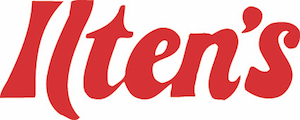
The Nest thermostat is one of the best-selling smart thermostats you can get. And for good reason. It figures out your temperature preferences and creates an energy-efficient schedule to match. And using geofencing with your phone, the Nest Learning Thermostat and Nest E are aware of when you’re at your house or out and about and can change temperatures to help you save even more.
The Nest can be used with a full range of 24-volt heating and cooling systems, but it’s always a smart idea to check the Nest thermostat compatibility checker before purchasing one. Don’t forget to contact your energy supplier for valuable rebates, as you may be able to get a Nest for free or close to it.
Once you’ve made sure it’s compatible, you can either hook it up yourself or call a HVAC professional like Ilten's. If you’re putting it in yourself, you’ll spot a terminal for the C-wire, or common wire. This wire is just used for powering your thermostat. If your home or HVAC system is older, you might not have one of these wires. In the majority of cases, Nest says this isn’t a setback because the thermostat can draw ample power from other heating and cooling wires.
In some cases, your heating and cooling system might need that C-wire. And here’s why.
Why Your Nest Keeps Losing Power and Other Problems
The Google Nest Thermostat is better than older programmable thermostats that use a combination of wiring and AA batteries for power. It has a rechargeable lithium-ion battery and wiring to sync with Wi-Fi, power its digital display and run your heating and cooling system.
8 Common Nest Thermostat Issues
If it can’t draw ample juice, Nest says you may run into some of these problems:
- Bad battery life.
- Thermostat motion sensing is disabled.
- Your thermostat occasionally disconnects from Wi-Fi.
- Your system unexpectedly turns on or off, or won’t stop running.
- Your system is creating strange noises, such as chattering, stuttering, clicking or thumping.
- Heating or cooling is short cycling, or repeatedly turning on and off in a short period of time.
- There is a delay notice on your Nest thermostat’s screen, along the lines of “heating is delayed for 2:30 minutes.”
- The system fan is always on, won’t run or turns off and on repeatedly in a short period of time.
You could believe something is wrong with your heating and cooling system, but if you just started using the Nest, we recommend you start with your thermostat right away. This is especially timely if the weather is mild, and you haven’t been running your heat or air conditioning consistently.
Our Pros Can Resolve Nest Thermostat Issues
If you’ve gone through Nest thermostat troubleshooting without help but can’t repair the problem, a smart thermostat pro including one from Ilten's can assist you. We can determine the problem and install a C-wire, if needed.
Smart thermostats such as the Nest are created to make your life simpler, through automatic energy-efficient programming and the option to keep an eye on temps while you’re out. It’s a frustrating experience when yours won’t operate like it should, but our heating and cooling experts at Ilten's can fix the issue fast.
If you’re going through strange heating and cooling behavior with your new Nest, reach out to us at 319-208-2351 to set up your appointment now.
